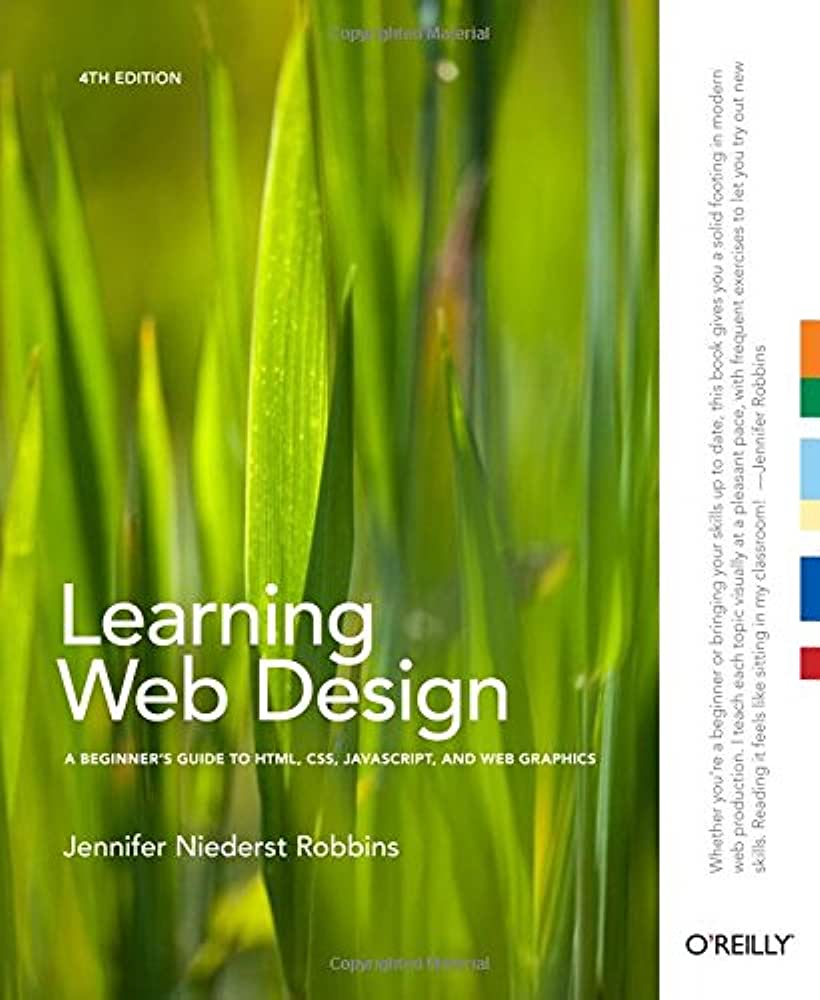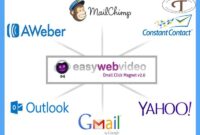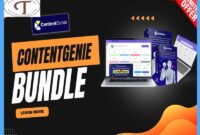How to Learn Web Design a Beginner Complete Guide – Web design is a great skill to have in today’s digital world. To learn web design as a beginner, start by learning the basics of HTML and CSS, then progress to more complex topics such as JavaScript and frameworks like Bootstrap. Use online tutorials or books to help guide you through the process.
Once you understand the fundamentals, practice what you’ve learned by building small projects on your own or with friends. Consider taking an online course if available in your area for further guidance and feedback on your work. Lastly, stay current with new technologies and trends by reading blogs from industry professionals or attending local tech events whenever possible.
With dedication, patience, and hard work anyone can become proficient at web design!
- Research Web Design Basics: Start by researching the basics of web design, such as HTML and CSS
- This will give you an understanding of how websites are built and what role each element plays in creating a website layout
- There is plenty of online resources to help you with this research so take advantage of them! 2
- Choose Your Platform: Decide on which platform or software you would like to use for your web design projects
- Popular options include WordPress, Adobe Dreamweaver, and Wix
- Each has its own advantages and disadvantages so do some research before settling on one platform or another
- Practice Simple Projects: Once you have learned the basics, start practicing simple projects like building a simple landing page or designing a blog template from scratch using HTML/CSS code (or the editor provided by your chosen platform)
- Doing this repeatedly can help solidify what you’ve learned while giving you real-world experience that will come in handy when it comes time for bigger projects down the road
- 4
- Learn New Skills: As your skills improve and evolve over time, don’t be afraid to challenge yourself by learning new techniques such as JavaScript coding or responsive design principles that apply across all devices including desktops, tablets & smartphones etc
- Take your time as there is no rush to learn everything at once; focus on mastering each concept before moving onto something else! 5
- Get Professional Help : When faced with more complex issues ,don’t hesitate to reach out for professional assistance if needed – even experienced web designers need guidance sometimes! It’s also helpful just to ask questions in forums or support groups related to web design since other users may have faced similar issues in their own workflows & offer valuable advice from their experiences
Web Design: The Complete guide to getting started in 2022
How to Learn Web Designing Step by Step Pdf
Learning web designing step by step can be a great way for beginners to get their feet wet. A good starting point is to download a free PDF guide that provides an introduction to HTML and CSS, the two main coding languages used in web design. This document will provide you with the basics of creating websites and allow you to practice your skills before embarking on more complex projects.
Additionally, many online tutorials are available which provide detailed instructions on specific aspects of web design such as styling elements, adding interactive features and developing responsive layouts. With some patience and determination, anyone can learn how to create beautiful websites from scratch!
Web Design for Beginners Free
If you’re just getting started with web design, there are plenty of free resources available that can help you get the basics down. From tutorials and courses to tools like HTML editors, image manipulation software and FTP programs, you can find everything you need to start designing your own website for free! Plus, many websites offer helpful forums where experienced web designers are ready to answer any questions or provide tips on how to make the most out of your work.
How to Learn Web Designing for Free
Learning web design for free is possible with the right resources. There are many websites dedicated to teaching coding and web design, such as Codecademy and Code Avengers. Additionally, there are popular tutorials available on YouTube that provide detailed step-by-step instructions on how to create a website from scratch using HTML and CSS.
With dedication and practice, anyone can learn to code in no time at all!
How to Learn Web Development from Scratch
Learning web development from scratch can be intimidating, but it’s also a rewarding experience. To get started, you’ll need to learn the basics of HTML and CSS. Once you have a good understanding of those two languages, then you can move on to more complex topics such as JavaScript and server-side programming.
You should also familiarize yourself with databases and other related technologies in order to become proficient in web development. Additionally, take advantage of online tutorials or classes available for free or at low cost if needed. With dedication and hard work, anyone can become an expert web developer!
Web Design Examples
Web design examples include everything from simple static HTML websites to complex integrated content management systems. These examples demonstrate the range of features and functionality that modern web designers can create. Examples may include interactive elements like drop down menus, hover effects, or parallax scrolling; visually appealing layouts featuring a combination of text and images; optimized search engine results; and digital marketing tools such as email campaigns or social media integration.
No matter what type of web design you are looking for, there is likely an example available online showcasing its capabilities.
Web Design And Development
Web design and development is the process of creating a website, including its layout, content, coding, and graphics. It involves both creative and technical aspects to create an effective website that meets user needs and is appealing to users. The web designer works on the look of the site while the web developer works on its functionality.
Both are necessary for a successful project as they work together to create an engaging experience for users when visiting a site.
Web Design Tools
Web design tools allow you to create beautiful, modern websites without having to learn complicated coding languages. With a variety of options available, from simple drag-and-drop page builders to more advanced CMS and development platforms, there is something for everyone. Whether you’re an experienced developer looking for the latest technology or a novice just starting out with web design, there are plenty of user friendly tools that can help get your website project off the ground quickly and easily.
Simple Website Design for Beginners
If you’re looking to get started with website design, it can be overwhelming navigating the many tools and options available. However, there are some simple steps you can take to create a basic website quickly and easily. Begin by selecting a domain name for your site and signing up for web hosting services that provide a user-friendly interface for creating content.
Once your hosting is set up, familiarize yourself with HTML basics, including basic tags like headings & paragraphs as well as concept of CSS styling within the page structure. Finally, use an easy-to-use content management system such as WordPress to allow you to manage all aspects of your website in one convenient location. With these steps in mind, it’s possible to have a functional website ready in no time!

Credit: www.simplilearn.com
How Do I Start a Web Design Step by Step?
Starting a web design from scratch can seem daunting, but it doesn’t have to be. Just follow these steps and you will soon have your own website up and running. First, decide what type of site you are trying to create.
Are you creating an e-commerce store? A blog or portfolio? Once you’ve decided the purpose of the site, start researching hosting services that offer plans that fit your needs in terms of cost and features.
After signing up for a hosting plan, choose a domain name (your website address) that is memorable and relevant to your content. Then find reliable software such as WordPress which allows non-experts to easily customize their sites with plugins or themes so they don’t need to code everything themselves. Next step is uploading content like text, images and videos onto the server if necessary depending on the type of site being created.
Finally, test out different browsers like Google Chrome or Firefox to make sure all elements are displaying correctly across multiple devices before launching it live for everyone else online!
Is Web Designing Easy for Beginners?
Web designing for beginners can be a daunting prospect, but with the right tools and guidance it doesn’t have to be. For those new to web design, there are many options for learning the basics. There are numerous online tutorials available that provide step-by-step instructions as well as helpful hints from experts on how to create attractive, professional looking websites.
Additionally, many colleges and universities offer courses in web design which allow students to learn more about coding languages such as HTML and CSS. Once you have mastered the basics of web design, you can start creating your own website or become a freelancer offering website design services. While it may take some time and effort to get started with web designing for beginners, once you do it can become an incredibly rewarding experience both personally and professionally!
What are 5 Things You Should Learn in Order to Be a Web Designer?
Being a web designer requires more than just an understanding of coding. To be a successful web designer, there are five key skills you should learn:
1. HTML and CSS: This is the foundation for any website, so mastering these two languages is essential to creating effective websites.
2. Graphic Design: Knowing how to create visually appealing pages can set your designs apart from others. You need to understand color theory, typography, and basic design principles in order to produce beautiful websites that attracts visitors.
3. User Experience (UX): Creating an intuitive user experience is paramount when designing websites that attract and keep users coming back for more information or services provided by the site.
Understanding how users interact with your design will help you craft better experiences for them as they navigate through your site’s content and features.
4 .SEO Optimization: Learning about SEO basics such as keyword research, link building strategies, page speed optimization and other tactics can help increase website visibility on search engines like Google which leads to increased organic traffic over time if done correctly .
5 .Testing & Troubleshooting : Having strong troubleshooting skills helps ensure that all functionality works properly across different browsers and devices before launch , this way customers have a great experience when visiting your designed sites !
How Do I Become a Web Designer With No Experience?
If you’re interested in becoming a web designer but have no experience, don’t be intimidated. It may seem like an uphill battle to break into the field if you don’t know where to start, but with the right guidance and dedication, it is possible to become a successful web designer without any prior knowledge of the industry. First and foremost, take advantage of online courses and tutorials that can provide a comprehensive overview on web design fundamentals and best practices.
This will give you an understanding of HTML & CSS coding principles as well as how websites are built from scratch. Additionally, familiarize yourself with design tools such as Adobe Photoshop or Sketch which are incredibly useful for creating wireframes or mockups for designing website layouts before coding them out in HTML & CSS. Furthermore, network with other designers who can offer valuable advice about what works when it comes to building user-friendly and visually appealing websites – this could also help open doors to potential job opportunities down the line!
Finally, practice makes perfect; use your newfound skills by working on various projects that showcase your abilities while keeping up with trends in website design so that you can create stunning work that stands out among others. All these steps combined should set you up nicely for success as a web designer even without previous experience!
Conclusion
This blog post has provided a comprehensive guide to web design for beginners. With the right tools, knowledge of coding languages and skills in graphic design, you are now equipped with everything you need to start your journey into web design. By taking advantage of tutorials, practice projects and helpful resources available online, you can continue developing your skills until you become an expert designer.
Web design is a rewarding field that allows creativity and technical know-how to come together to create stunning websites that users love.






